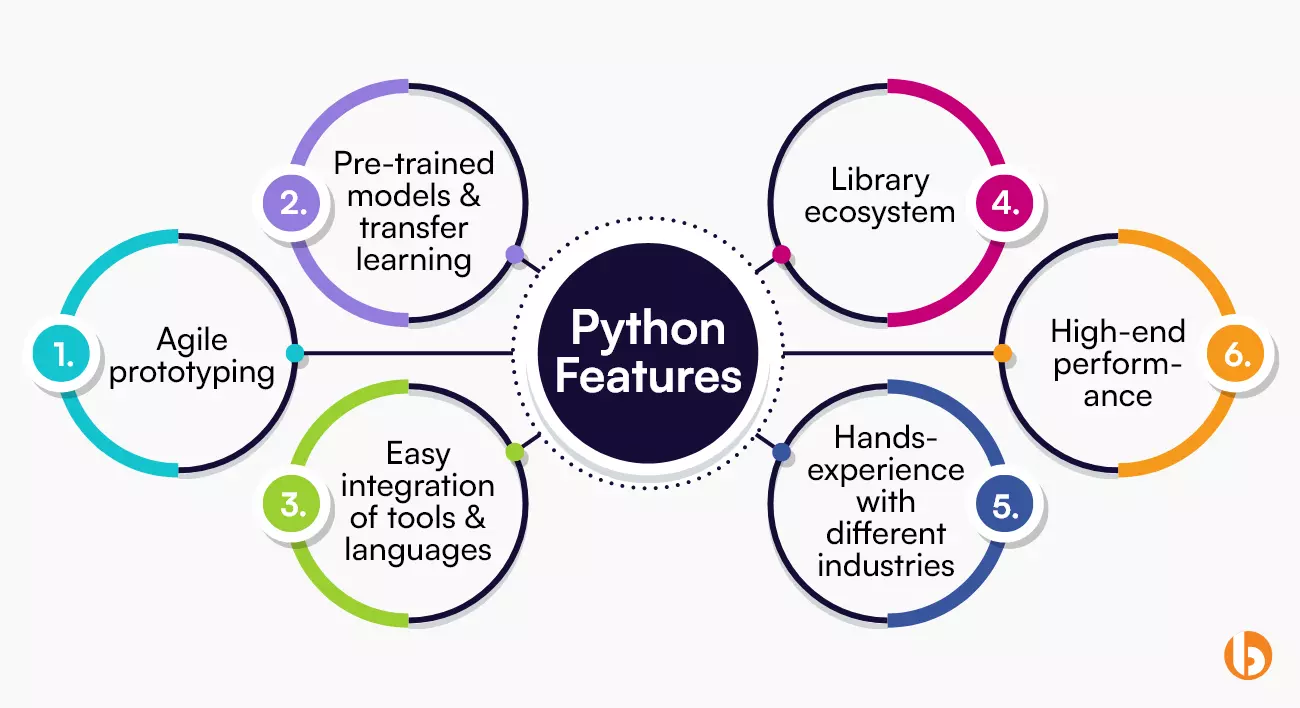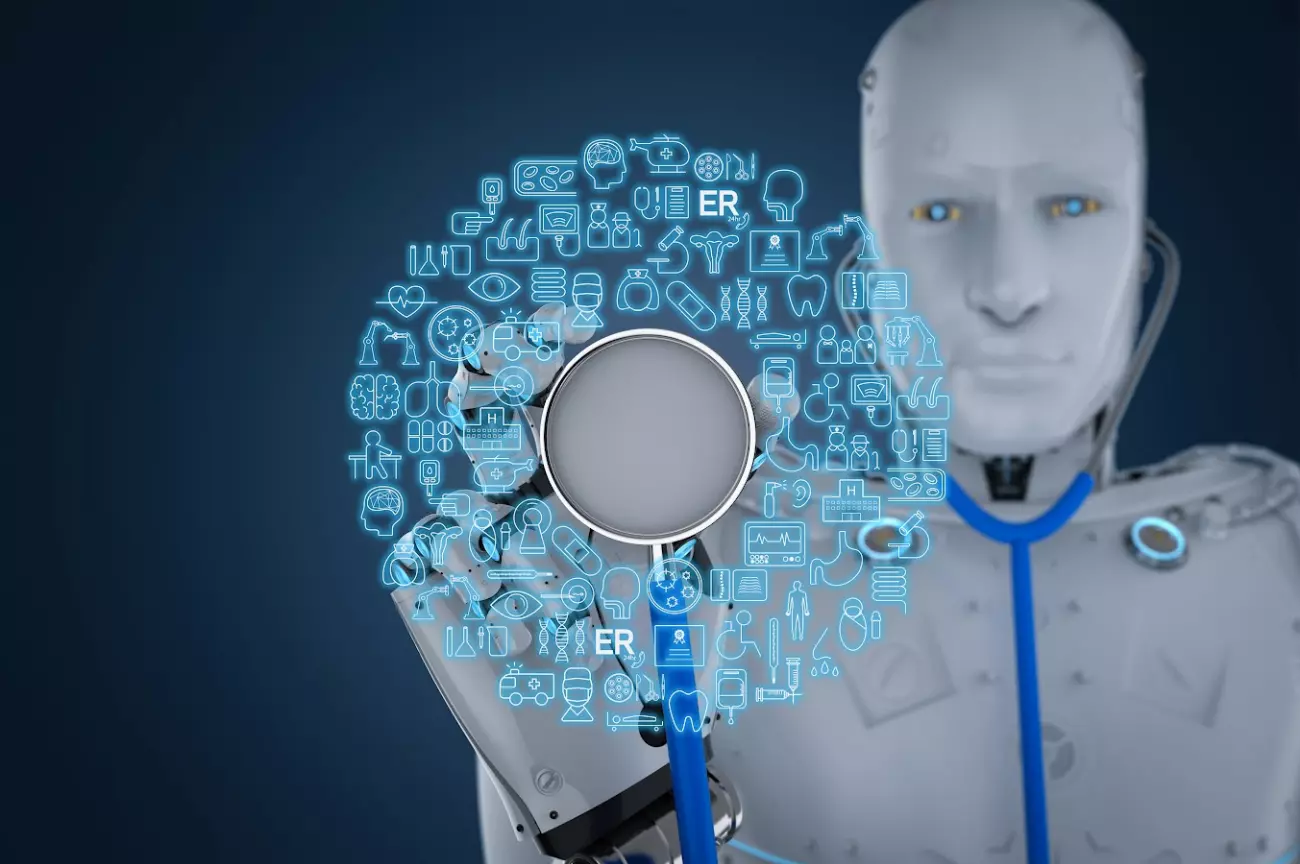Python with Machine Learning: Make User Experience Interactive
Last Updated on December 27, 2024
Quick Summary:
Using Python with Machine Learning means advancing the user experience by building innovative solutions for the challenges faced by the users. A blend of two futuristic technologies helps you build a revenue-generating digital platform; go through the blog and decide what platform you want to build for your target audience.
Siri to YouTube and Netflix to Amazon are all real-life examples of Machine Learning. How?
Siri follows your command, Netflix suggests shows based on your interest, Amazon ensures showing up products that you once visited, and YouTube always satisfies you with relevant content.
All thanks to the intangible and mind-blowing magic of Machine Learning. It is a subset of Artificial Intelligence that learns from patterns found in data. And it has a lot of capabilities, which we can leverage and make informed decisions quickly, solve complex problems without much difficulty, and automate monotonous tasks.
What will have your heart is the combination of Python with Machine Learning. Python is known for its versatility, easy learning curve, extensive community support, interpretive language, and drag & drop libraries. And combining Python and Machine Learning helps you build predictive models, natural language processing, image & speech recognition, and data analysis.
Now that you know what’s possible with a programming language and cognitive technology, let’s understand every detail.
Python, a programming language, can single-handedly execute multiple tasks. But when leveraging it with Machine Learning Python, it delivers some amazingly fruitful results. How is it? Let’s know it by understanding some powerful Python features.

Quick prototyping is only possible if Python couples with Jupyter Notebooks and other development environments. Doing this will help software developers test, iterate, predict results, and fetch valuable insights from the data.
Python contains libraries like PyTorch and TensorFlow, ensuring access to pre-trained models and state-of-the-art architectures. Such pre-trained models require less training and computational resources, and developers can quickly build advanced models and transfer learning.
Python makes integrating with other tools and languages easier. The integration benefits visualization, data migration, and deployment. Unlike other languages, Python is flexible in working with frameworks like PyTorch and TensorFlow for deep learning projects.
Regarding Python machine learning, Python has vast libraries, such as Pandas, NumPy, and Scikit-learn. These libraries enable model development, analysis, and data manipulation. Moreover, having these libraries by the side means agile development and more manageable tasks.
Python is the preferred programming language for building machine-learning models across industries. Thanks to its versatility and ease of integration, it is a developer’s favorite programming language for implementing and deploying machine learning models.
Regarding high-end performance, Python’s NumPy library, and efficient Python machine learning code. And for performance-intensive tasks, Python leverages C and C++. Moreover, Python even bolsters parallel processing, enabling multi-core processors.
These features work well when the libraries are leveraged efficiently. Let’s look at some Python libraries you can utilize for your machine-learning projects.
NumPy is a fundamental library is mainly used for scientific computing since it can offer powerful data structures, wide manipulation functions, and mathematical operations that aid in numerical computation & data analysis.
SciPy library is built upon NumPy and covers algebra optimization, signal and image processing, and statistics. Besides, the Python library is reliable for implementing algorithms crucial for data analysis, engineering apps, and scientific research.
Matplotlibs is a data visualization library that enables static, animated, and interactive visualization across formats. Software developers leverage Matplotlib for data analysis, data visualization, machine learning, and scientific research.
Also Read: Python with Data Visualization
Use the scikit-learn machine library for classification, regression, dimensionality reduction, and model selection. This library offers consistent API that is easy to access both by beginners and experienced developers.
Keras is another framework written in Python used for the training and developing of neural networks. Another great benefit Keras brings is helping software developers build prototypes and execute deep learning models.
Mlpack facilitates machine learning (ML) tasks. You can expect scalability with Mlpack and other crucial functionalities, like clustering, regression, classification, and dimensionality reduction.
Theano ensures easy mathematical computation related to machine learning and mathematical computation. Theano has made a great contribution to the deep learning arena since it can compute tricky mathematical problems and aid in the development of optimized ML models.
So, these are some significant features and notable libraries for Python with Machine Learning. Now let’s look at Python’s ecosystem and how it contributes to Machine Learning.
Ready to harness the power of Python for machine learning?
Our expert Python programmer is just a click away. Hire Python Programmer now and transform your data into actionable insights
Python is one of the simplest programming languages to learn and implement. Harnessing Machine Learning with Python will bring some fruitful results. Python has an understandable syntax that is easy to access both by newbies and experienced software developers.
Now let’s understand how Python will enhance the Machine Learning experience.
Due to the versatile nature of Python, it enables seamless integration with visualization and data processing tools. Integration helps to interface web frameworks, databases, and APIs, supporting preprocessing and data acquisition. Python’s libraries, like Matplotlib and Plotly, can be leveraged to evaluate data patterns and model outputs.
First, Python has many libraries like NumPy, SciPy, Scikit-learn, TensorFlow, Keras, and PyTorch, offering ample functionalities for machine learning tasks. These libraries cater to pre-built algorithms and tools for data manipulation, model building, training, evaluation, and deployment. Also, these libraries promise to make complex ML workflows really simpler and better. Lastly, due to ML libraries, developers can focus on the models’ core logic.
Python easily integrates with Tableau with the help of Tableau Python Server (TabPy) and Tableau Data Extract API. Firstly, TabPy enables the implementation of Python code within Tableau. This implementation enables Tableau visualization by leveraging machine learning capabilities and custom functions.
Python makes the development cycle easier with its easy-to-understand syntax. Its unique features, like code maintainability, readability, and collaboration, ensure no-nonsense hassles. And the vast community always stands on their toes to help build prototypes quickly, experiment, and iterate machine learning models.
When developing machine learning models, Python has ample documentation, tutorials, and examples to get you started. One can address and overcome challenges with innovative solutions with continuous improvements, discussions, active online forums, and available online resources.
Python boosts performance by leveraging multi-core processing, GPU acceleration, and parallel computing. Besides, certain libraries like TensorFlow and PyTorch ensure high-performance computation on GPUs, allowing training and conclusion for large ML models.
When it comes to deep learning, Python tops the chart. And the libraries like PyTorch and TensorFlow offer frameworks that build and train deep neural networks. It optimally uses pre-trained models to implement deep learning techniques across verticals.
In the beginning, we discussed a few examples of Machine Learning, including Siri, Netflix, and Amazon. But do you wonder where this cognitive technology has been implemented and how it will impact if Python is leveraged to build machine learning projects?
Since Python is a powerful programming language, combining it with Machine Learning will surely deliver outstanding and futuristic results. And it has not just been the talk of the town but actually been leveraged by many big organizations.
So, here is the scope of Python with Machine Learning:
It is one of the areas explored by Python to inculcate Machine Learning and bring transformation to the industry. Image recognition has been implemented in several industries, such as healthcare, autonomous vehicles, and authentication.
Let’s understand Python with Machine Learning image recognition with an example:
The search engine giant has significantly leveraged Python and machine learning to execute their Inception, an image recognition project that is a deep convolutional neural network. Google has used this image recognition project in its different products, such as Google Photos, Google Lens, and Google Image Search.
You must have definitely seen how your Google Photos are categorized based on the objects in the pictures. For example, Mountains, Rivers, Locations, and Persons.
Ready to harness the power of machine learning?
Hire our highly qualified Machine learning developers that can help you build intelligent systems that drive growth and innovation.

First, Python uses NLTK, spaCy, and Gensim libraries to execute Natural Language Processing tasks. And the NLP apps are capable of language translations, chatbots, and sentiment analysis.
Let’s understand how Python and ML combined to build an NLP project:
Python and Machine Learning have majorly contributed to the development of Snapchat. PyTorch, TensorFlow, scikit-learn, NLTK, and Open CV libraries are the backbones behind natural language processing.
For Natural Language Generation, Recommendation Systems, and Personalization & Adaption, Python with machine learning uses recurrent neural networks, TensorFlow, and Machine Learning models, respectively.

In the technological age, Python helps build recommendation engines for personalized suggestions. It helps in shopping, streaming websites, and social media channels to enhance user experience and boost customer engagement.
Netflix leveraged machine learning algorithms that are built using Python. These algorithms analyze user behavior, search history, ratings, and preferences. The data recommender collects and evaluates to recommend your favorite shows.
The recommendation engine considers several factors, such as viewing history, ratings given to previous shows, and genre selection. Both collaborative filtering techniques and ML algorithms leverage to figure out similarities and patterns between shows and users for easy generation of recommendations.

Machine learning helps identify patterns, anomalies, and past data to determine potential financial threats. The technology combination will benefit various sectors, such as finance, insurance, banking, and online transactions.
PayPal is an online payment platform processing billions of transactions. PayPal has employed Python with ML to combat financial fraud. Python has libraries like TensorFlow and scikit-learn that evaluate data and build and train models.
The ML models in Python detect fraudulent/suspicious activities for which it even assigns risk scores so that the next time such activities happen, it can prevent them proactively. Also, when the risk is higher, the scrutiny is severe. The scrutinizer investigates and performs appropriate actions, depending on the severity of the fraudulent transactions.

The fifth use case on the list is Predictive Maintenance, which helps the manufacturing, transportation, and energy industry to predict equipment failures or maintenance requirements. Such predictive maintenance helps in planning and maintaining machines and performances.
Siemens uses predictive maintenance by Python with machine learning across several sectors, including energy, transportation, and manufacturing. The predictive maintenance models use data analytics and ML to evaluate equipment performance, identify anomalies, predict maintenance requirements, and determine preventive measures for reducing costly downtime.

In medical, disease diagnosis, patient risk stratification, drug discovery, and medical image analysis are all executed through Python with machine learning. ML offers medical suggestions to patients for better treatment.
IBM Watson Health leverages ML and Python to find healthcare solutions. It works with researchers, drug developers, and pharmaceutical companies to identify real-time patient data, health complications, and incoming flow and help make decisions.

Python is and will always be a developer’s favorite programming language. It is also chosen because it is compatible with all the cognitive technologies and executes most futuristic tasks. From manufacturing to healthcare and finance to online platforms, Python and Machine Learning have a great dominance.
If you want to leverage Python and Machine Learning, connect with us. A house of experienced and well-versed developers who will execute your idea of making your customers’ lives easier and better.
Some popular machine learning algorithms include logistic regression, random forest, support vector machines, linear regression, k-nearest neighbor, naive Bayes, gradient boosting algorithms, and clustering algorithms.
Several evaluation metrics, including accuracy, F1-score, and area under ROC curve for classification tasks. And for regression, mean squared error, mean absolute error, and R-squared are used. Cross-validation and holdout are the other two methods for evaluating model performance on unseen data.
Python offers libraries that make the implementation of ML algorithms easier and swifter. Besides, the programming language also ensures preprocessing, model evaluation, and data manipulation.
Your Success Is Guaranteed !
We accelerate the release of digital product and guaranteed their success
We Use Slack, Jira & GitHub for Accurate Deployment and Effective Communication.